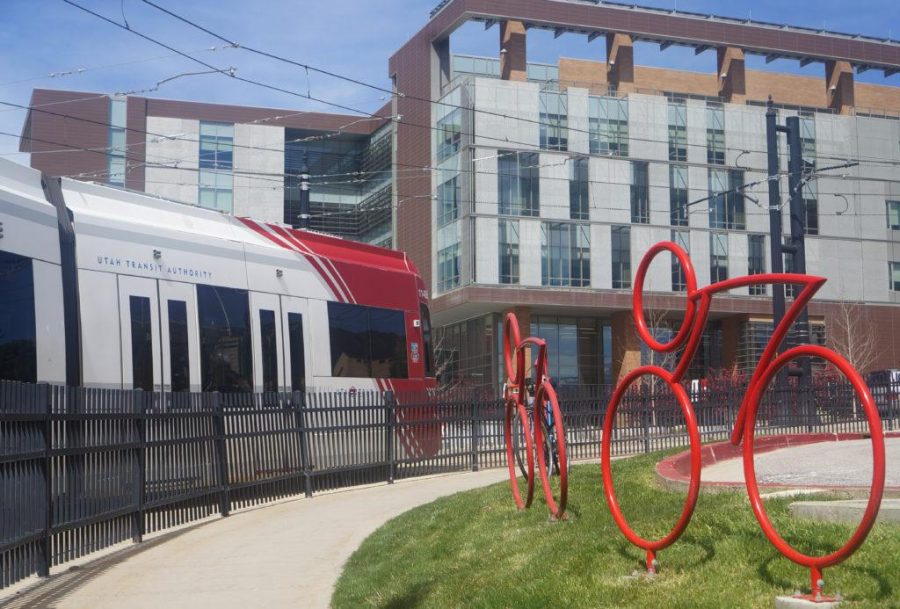Dalley: U Students Should Better Utilize Their Public Transit Passes
September 6, 2019
On any given morning during the school year, a mass of University of Utah students and faculty step onto public transportation. In fact, around one-third of faculty and students ride public transit to campus every day. UTA and the U have worked as a partnership before the first TRAX line even started running in 1999. They joined together to provide new ways for the university to mitigate the ever-increasing traffic on and around campus. This partnership with UTA has provided solutions that are efficient and economic, with TRAX and multiple busses stopping at different parts of the campus every day. Taking public transit has many benefits, such as reducing one’s carbon footprint, saving money and being able to use time more efficiently. UTA passes are one of the many benefits of being a student or faculty member at the U, and these passes are an excellent resource for everyone concerned about their environmental impact.
Utah is known to have the worst air quality out of any state in the country. According to the American Lung Association’s 2018 “State of the Air” report, Salt Lake City was one of the three Utah cities specifically mentioned for the poor air quality caused by its high amounts of ozone and particle pollution. While there are many ways for us to combat Salt Lake’s poor air quality, taking public transit is an extremely accessible option for U students.
Transportation accounts for 29% of all greenhouse emissions in the U.S. It has been shown that taking public transportation reduces emissions by over 30% for buses, 62% for light rail trains (like the FrontRunner) and 76% for heavy rail transit, like subways and metros. On December 22, 2018, UTA held a Free Fare Friday, allowing riders to hop on without being required to purchase a ticket. On that day there were 17,560 fewer cars on the roadway and a 23% increase in ridership on UTA. The transit services of that day prevented three tons of pollutants and 200 tons of greenhouse gases from being released into the atmosphere.
Taking public transit has a positive environmental impact, but it can also help students with their wallet. When we take public transit, we are able to save gas money while spending time more efficiently on things that we enjoy instead of being stuck in traffic. According to the American Public Transportation Association, we can save an average of $10,160 per year just by taking transit instead of driving. Based off of data gathered from larger cities, we also know that high-density cities with public transportation options are more economically productive than those that do not.
Investing in good public transit systems helps cities spend less on construction and road maintenance, and they are able to make better use of the land. As a commuter student myself, I spend the two hours that it would take me to drive to the U by working on school work or doing other things I enjoy. I am able put this time to better use than dealing with construction, navigating slow-moving traffic and staring at the road.
If U students would use their UTA pass, they would be able to ride to campus with ease while positively affecting the environment, saving money and boosting time management. On top of these clear benefits, public transit authorities might be more able to improve services by gathering additional data and funding if more people choose public transportation. As students, all of these benefits come to us for only $58.35 in student fees. What have you got to lose by switching to public transit?








